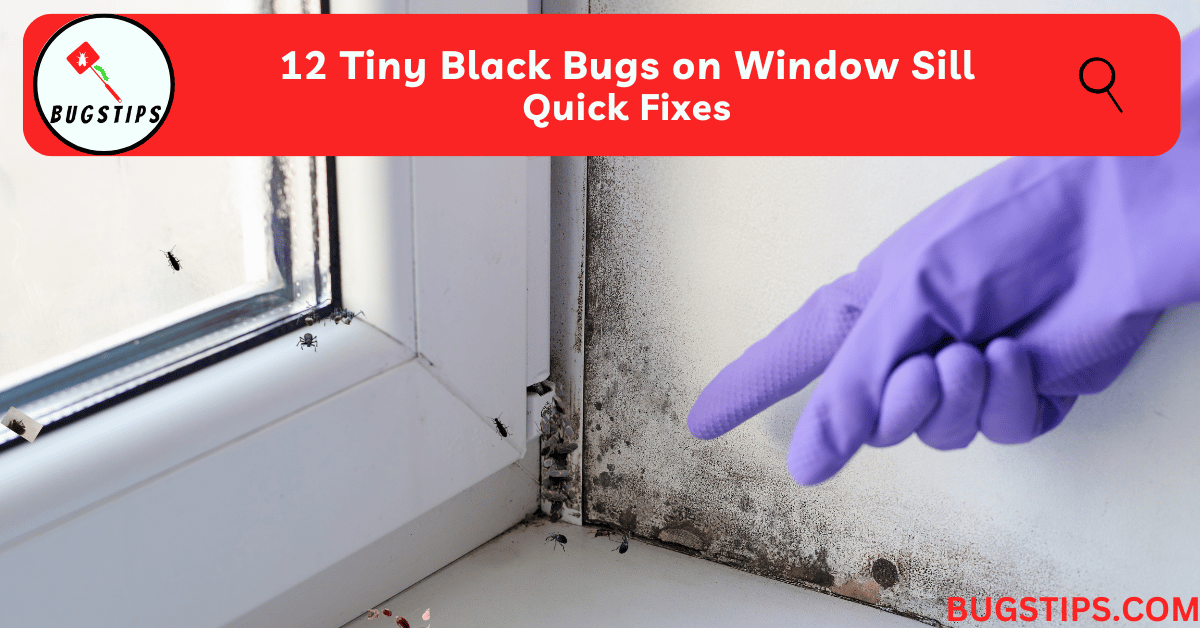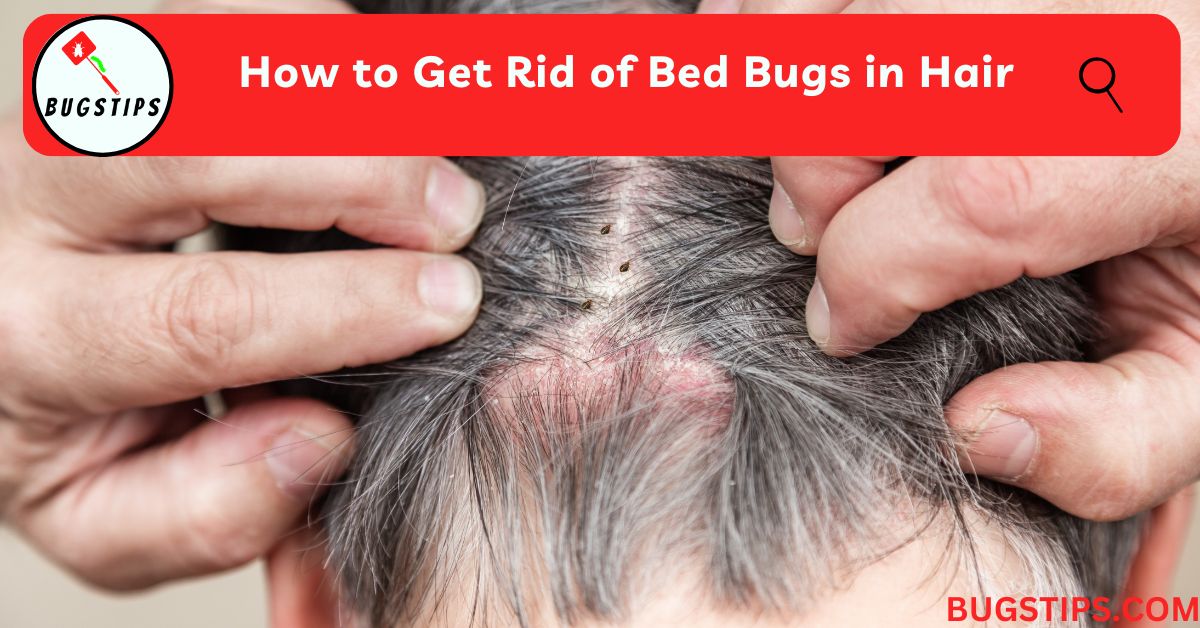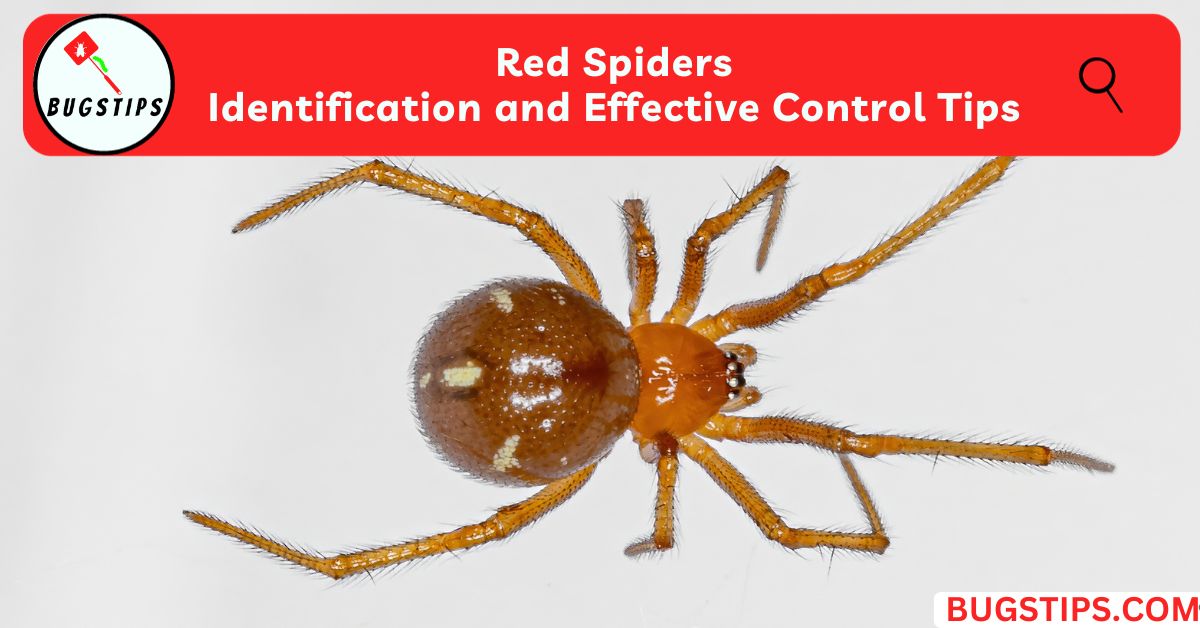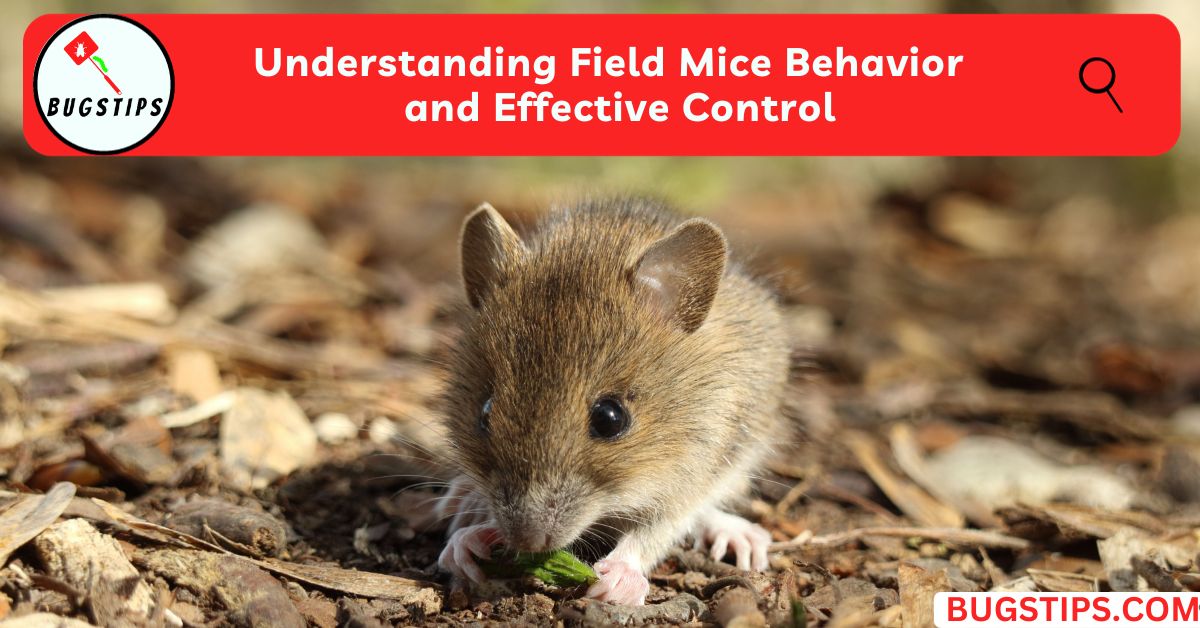This post may contain affiliate links which means as an Amazon Associate, this site may earn a small commission on qualified purchases made through links at no extra cost to you. Learn more on Affiliate Disclosure
Have you noticed tiny black bugs crawling around your windowsill? It’s a common problem that many homeowners and renters face, and it’s essential to address it before it turns into a full-blown infestation.
Bugs can easily make their way into your home through windows and doors, but that doesn’t mean your housekeeping skills are lacking. These pests can be persistent and require different removal methods depending on the type of bug.
In this article, we’ll explore some of the most common culprits of tiny black bugs on window sills and provide solutions for getting rid of them.
So, if you’re starting to see lots of bugs on your windowsill, don’t ignore the warning signs. Keep reading to learn how to identify the bugs and get rid of them before they become a bigger problem.
Related Article – 13 Bugs That Look Like Black Sesame Seeds | Full Guide
What Are Tiny Black Bugs on Window Sill?
If you’ve noticed tiny black bugs on your window sill, you may be wondering what they are and where they come from. These small insects can be quite a common sight in homes, and while they may seem harmless, it’s important to identify them accurately to understand any potential risks or issues they may pose.
Let’s explore some of the common types of tiny black bugs that can be found on window sills and gain a better understanding of their characteristics.
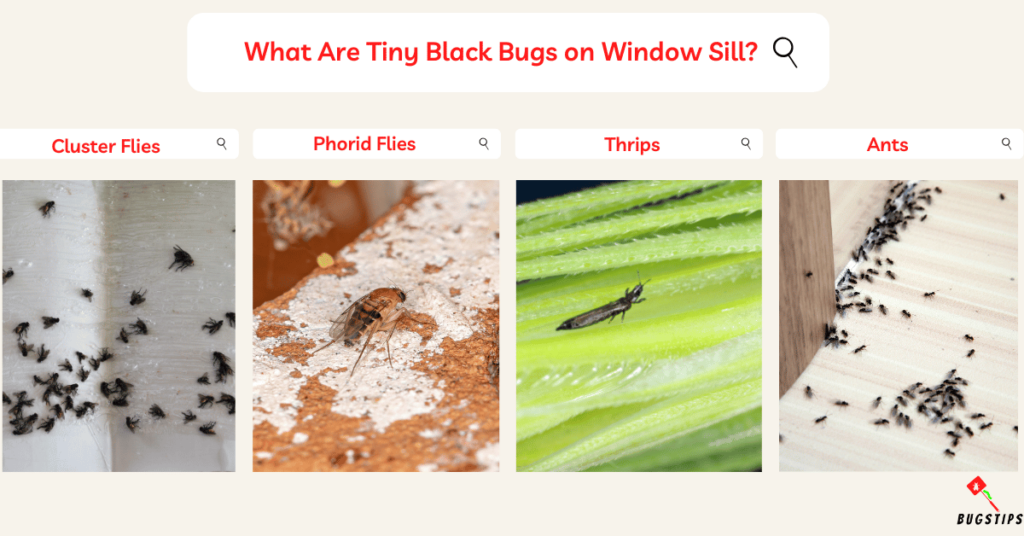
Cluster Flies
- Cluster flies, scientifically known as Pollenia species, are often mistaken for house flies due to their similar appearance.
- These flies are typically found in large numbers and tend to cluster around windows during the autumn season.
- While they don’t pose any direct harm to humans, their presence can be quite a nuisance.
- Cluster flies do not breed indoors but seek shelter in homes to overwinter, which can lead to large numbers accumulating on your window sill.
Phorid Flies
- Phorid flies, also known as humpbacked flies, are small black flies that can infest homes and gather around windowsills.
- They are attracted to decaying organic matter and can be found near drains, garbage bins, and other moist areas.
- Phorid flies can be a concern as they are known to carry and transmit bacteria, including harmful pathogens.
- Identifying and eliminating their breeding sources is essential to prevent infestations.
Thrips
- Thrips are tiny insects, measuring only about 1 to 2 millimeters in length, that can be black or translucent.
- Although they are more commonly associated with plants, thrips can occasionally find their way into homes, including window sills.
- They feed on plant sap and can cause damage to indoor plants if not controlled.
- thrips may not pose significant harm to humans, their presence indoors can be indicative of an infestation in nearby plants.
Ants
- Ants are social insects that come in various species, some of which are tiny and black.
- These tiny black ants can enter your home through small cracks and crevices, including window frames.
- While they may not cause direct damage to your window sill, ants can be a nuisance as they forage for food and leave behind trails and potential entry points for other pests.
Related Article – 10 Long Skinny Black Bugs in House | Effective Guide
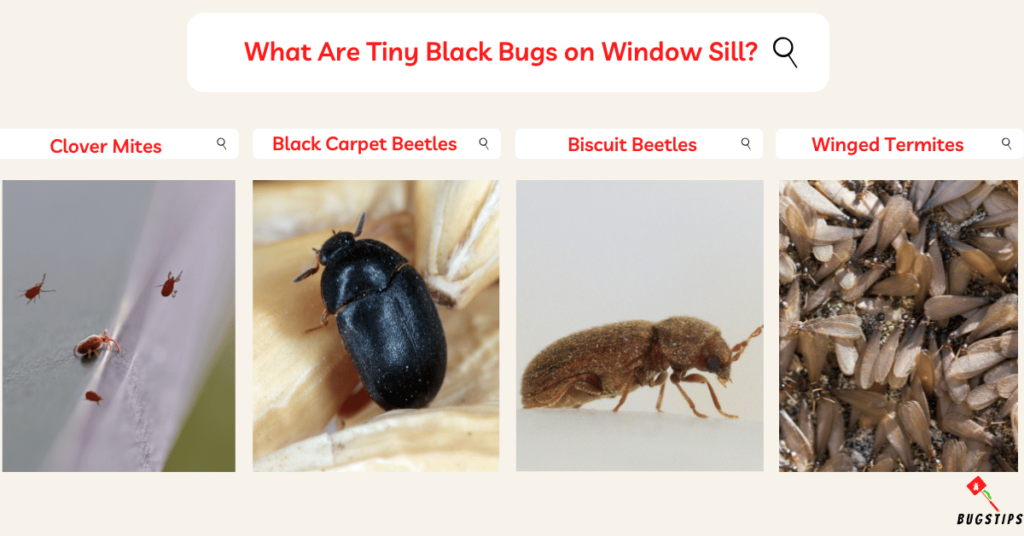
Clover Mites
- Clover mites are extremely tiny, red to dark brown bugs that can appear black to the naked eye.
- They are commonly found near windowsills and can enter homes in large numbers.
- Although clover mites do not bite or cause structural damage, their presence can be alarming due to their sheer numbers.
- These mites feed on plant sap and are often associated with areas where grass and vegetation are present.
Related Article – 22 Bugs with Hard Shells | Top Tips to Eliminate
Black Carpet Beetles
- Black carpet beetles are small, oval-shaped beetles that can range in color from dark brown to black.
- While adult black carpet beetles are attracted to outdoor environments, their larvae can infest indoor areas, including window sills.
- The larvae feed on a variety of organic materials, such as carpet fibers, fabrics, and stored food.
- If left unchecked, black carpet beetle larvae can cause significant damage to household items.
Biscuit Beetles
- Biscuit beetles, also known as drugstore beetles, are small brown to black beetles commonly found near food sources.
- They have a distinctive shape and are named after their tendency to infest stored food items, including biscuits, cereal, spices, and dried fruits.
- Biscuit beetles can find their way onto window sills if infestations are present in nearby pantry areas.
- Proper food storage and regular inspections are key to preventing and eliminating biscuit beetle infestations.
Related Article – 15 Tiny Yellow Bugs | A Comprehensive Guide
Winged Termites
- Winged termites, often referred to as “swarmers,” are reproductive termites that emerge from established colonies in search of new nesting sites.
- These flying insects are attracted to light and may be found near windowsills during swarming seasons.
- While tiny black-winged termites may not directly damage window sills, their presence can be a sign of a nearby termite infestation, which poses a significant threat to the structural integrity of buildings.
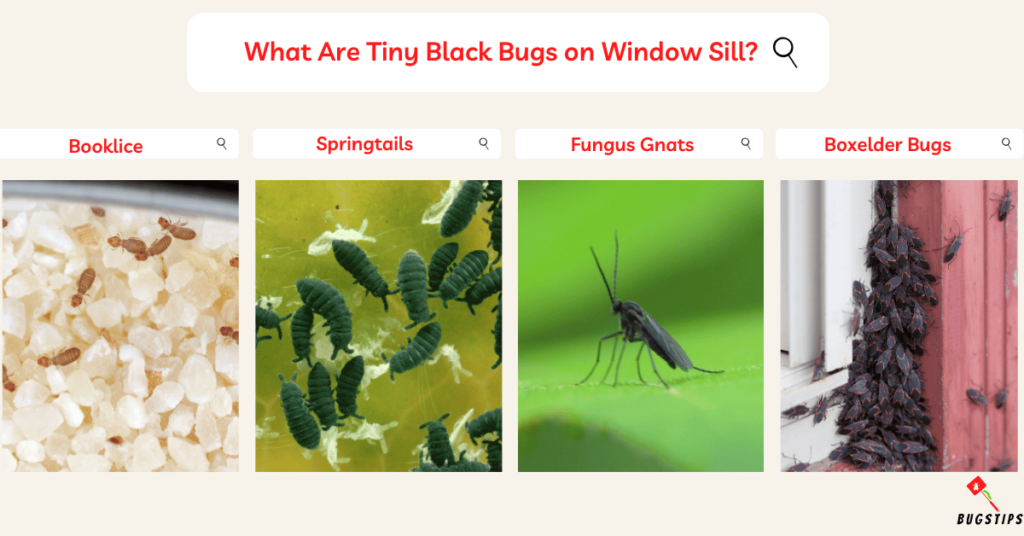
Booklice
- Booklice, or psocids, are tiny insects that are often mistaken for lice due to their name.
- These insects are commonly found in areas with high humidity and can infest books, paper, and other organic materials.
- Booklice are not harmful to humans or pets but their presence near windowsills may indicate excessive moisture or poor ventilation, which should be addressed to prevent further infestations.
Springtails
- Springtails are small, wingless insects that get their name from their unique ability to jump using a fork-like structure called a furcula.
- These tiny bugs are commonly found in moist environments, such as soil, mulch, and decaying plant matter.
- While they may occasionally be found on window sills, springtails do not cause harm to humans or property.
- However, their presence indoors can indicate underlying moisture issues that need to be resolved.
Fungus Gnats
- Fungus gnats are small, dark-colored flies that are often seen near plants and windows.
- They are attracted to damp soil, decaying organic matter, and fungal growth.
- Fungus gnats can be a nuisance as their larvae feed on plant roots, potentially causing damage to indoor plants.
Related Article – Gnats vs Fruit Flies | Spotting the Difference
Boxelder Bugs
- Boxelder bugs are black and reddish-brown insects that are commonly found near boxelder trees, maple trees, and other host plants.
- While they primarily feed on tree seeds and plant matter, they can occasionally gather on window sills and enter homes.
- Boxelder bugs do not cause direct harm, but their presence can be a nuisance, especially when they enter in large numbers.
Identifying the specific type of bug on your window sill can be challenging, but it is important in order to address the problem effectively.
Related Article – 7 Little Black Bugs on Dogs Not Fleas!
How to Get Rid of Tiny Black Bugs on Window Sill
Once you’ve identified the specific type of bug you’re dealing with, it’s time to take steps to get rid of them. With the right approach, you can effectively eliminate these pesky intruders.
Here are some practical methods to get rid of tiny black bugs on your window sill.
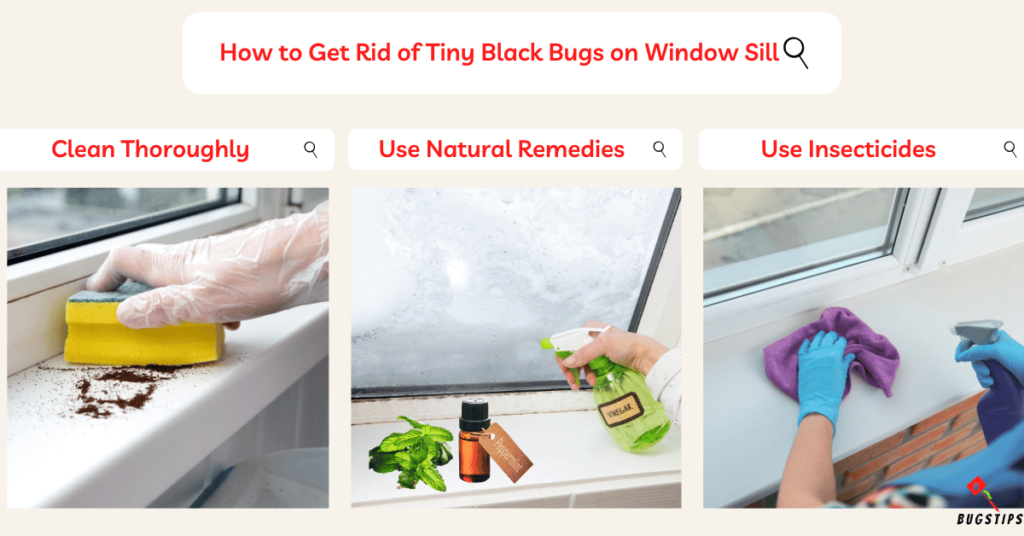
Clean Thoroughly
- Start by cleaning your window sill thoroughly.
- Remove any debris, food crumbs, or spilled liquids that may be attracting the bugs.
- Use a vacuum cleaner or a damp cloth to ensure all surfaces are clean and free from any potential food sources.
Use Natural Remedies
In addition to thorough cleaning and sealing entry points, you can use natural remedies to repel or eliminate bugs on your window sill.
Here are two effective options.
Peppermint Oil
- Peppermint oil has a strong scent that bugs find repulsive.
- Mix a few drops of peppermint oil with water in a spray bottle and apply it to your window sill.
- The strong aroma will help deter the bugs from infesting the area.
Diatomaceous Earth
- Diatomaceous earth is a natural powder made from the fossilized remains of tiny aquatic organisms.
- Sprinkle a thin layer of diatomaceous earth along your window sill.
- When bugs come into contact with it, the powder absorbs its protective waxy layer, leading to dehydration and eventual death.
- Consider using natural remedies to repel or eliminate bugs on your window sill.
Use Water and Dish Soap
- Create a mixture of water and dish soap and spray it on the affected areas.
- This solution can help deter bugs without the use of harsh chemicals.
Related Article – Little Black Bugs in My Car | Expert Removal Guide
Use Insecticides
In cases where natural remedies prove ineffective, you may need to resort to insecticides.
- Choose an insecticide specifically formulated for the type of bug you’re dealing with and follow the instructions carefully.
- Apply the insecticide to the window sill and surrounding areas according to the product guidelines.
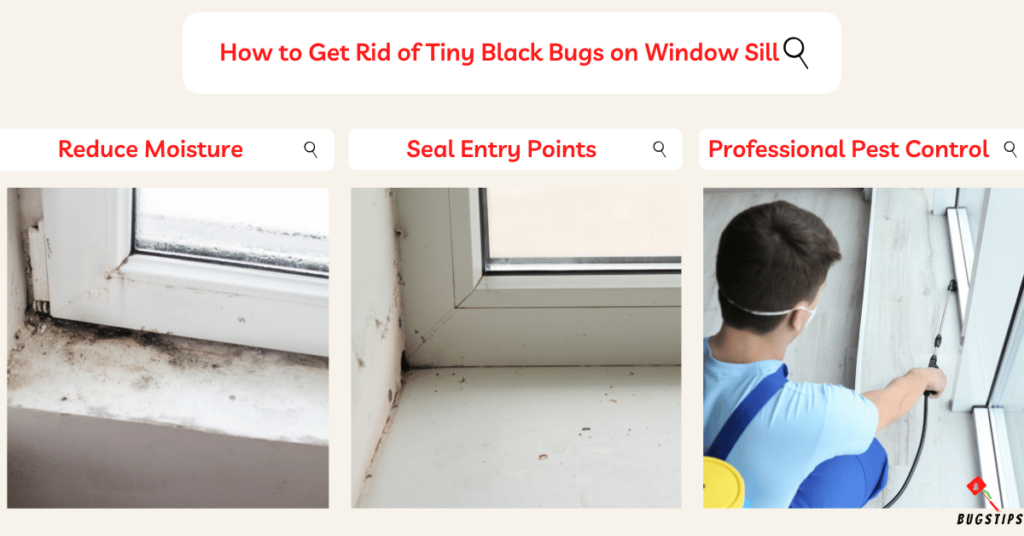
Reduce Moisture
- If moisture or dampness is attracting bugs like springtails or fungus gnats, take steps to reduce humidity levels in the area.
- Use dehumidifiers or ensure proper ventilation to keep the window area dry and less inviting to these moisture-loving bugs.
Seal Entry Points
- Inspect your window area for any gaps, cracks, or openings that may act as entry points for the bugs.
- Seal these entry points using caulk or weatherstripping to prevent further infestations.
Professional Pest Control
- If the infestation persists or becomes severe, it may be best to seek professional pest control services.
- Pest control professionals have the expertise and knowledge to effectively identify and eliminate bugs from your window sill using safe and targeted methods.
Final Thoughts
Identifying and eliminating tiny black bugs on window sills requires knowing the type of bug you’re dealing with.
Keeping your window sills clean and free of clutter can help prevent infestations, and checking and replacing weatherstripping can serve as an additional barrier.
If the problem persists or causes damage to your home, contact a pest control company for professional help.
With the right approach, you can keep your home free from unwanted pests and enjoy a comfortable living space.
You May Also Like – 5 Bugs with Lots of Legs | Ultimate Info Guide
FAQs
What are the little black bugs on my window sill?
The little black bugs on your window sill can be various types of insects, such as cluster flies, phorid flies, scuttle flies, thrips, ants, clover mites, black carpet beetles, biscuit beetles, winged termites, booklice, springtails, fungus gnats, or boxelder bugs.
Why are tiny black bugs on my window sill?
Tiny black bugs may be attracted to your window sill due to factors like food debris, moisture, or openings that allow them to enter. Each bug type has different preferences and reasons for being present, such as seeking food sources or suitable breeding conditions.
What are tiny black flying bugs in the house near the window?
Tiny black flying bugs in the house near the window can be various types of insects, such as fruit flies, gnats, or even some types of flies.
What are tiny black bugs in the house near the window jumping?
If you notice tiny black bugs near the window that are jumping, they could be springtails. Springtails are tiny insects that can jump considerable distances using a specialized tail-like structure.
What are the little black dots on my windowsill?
If you see little black dots on your windowsill, they could be mold spores. Mold can thrive in moist environments and appear as small black dots or specks.
What are the tiny gray bugs on my windowsill?
The tiny gray bugs on your windowsill could be silverfish or some other types of small insects. Silverfish are wingless insects with a silvery-gray appearance.
Resources – (for further reading)
Texas Standard – Ever Wondered Why Your Windowsill Is Suddenly Covered With Black Bugs?
Purdue University – Small Moving Specks on the Windowsill?
Pennsylvania State University – Cluster Flies
Sterifab – Types of Mites, Their Habitat & Species

